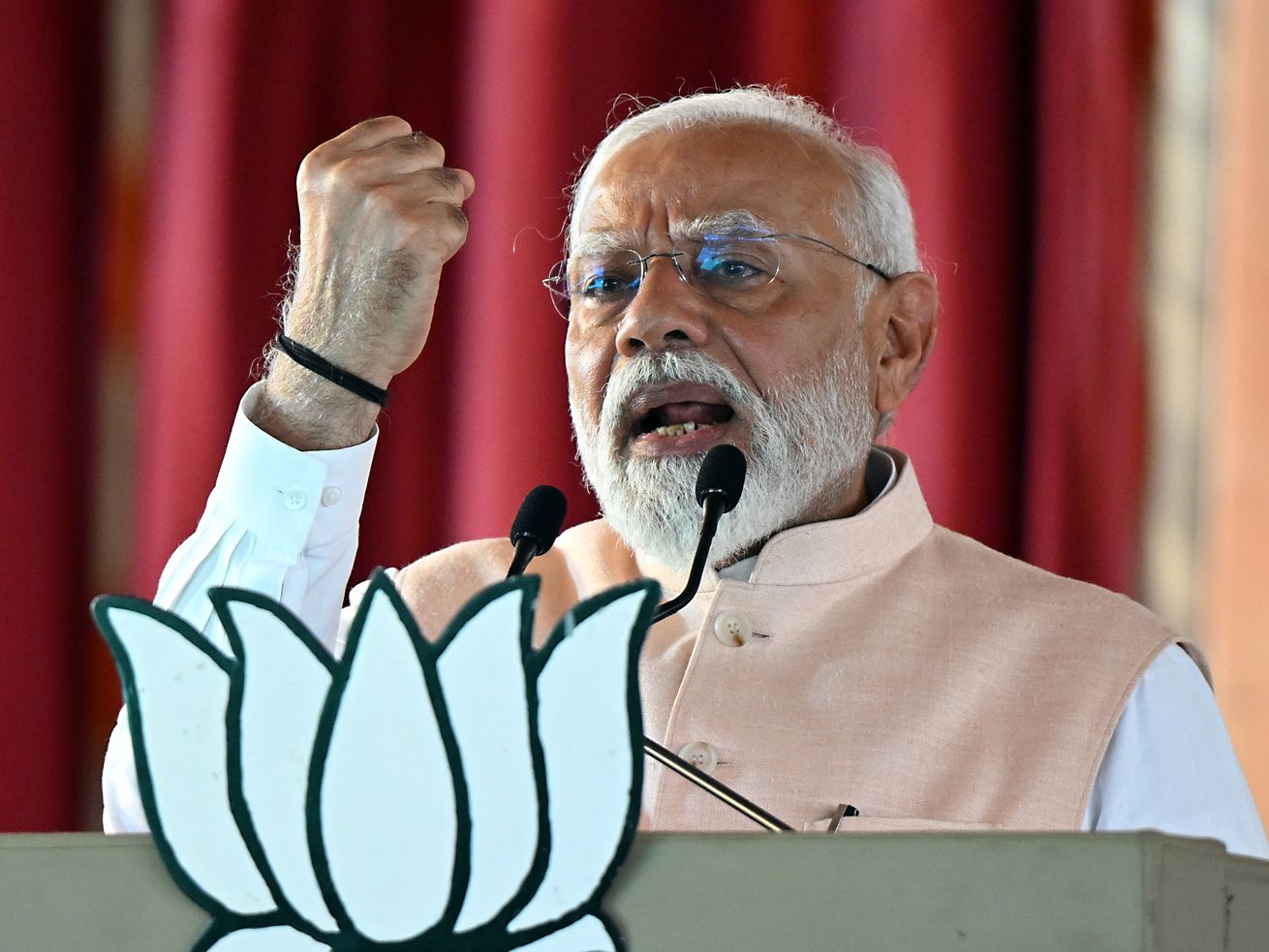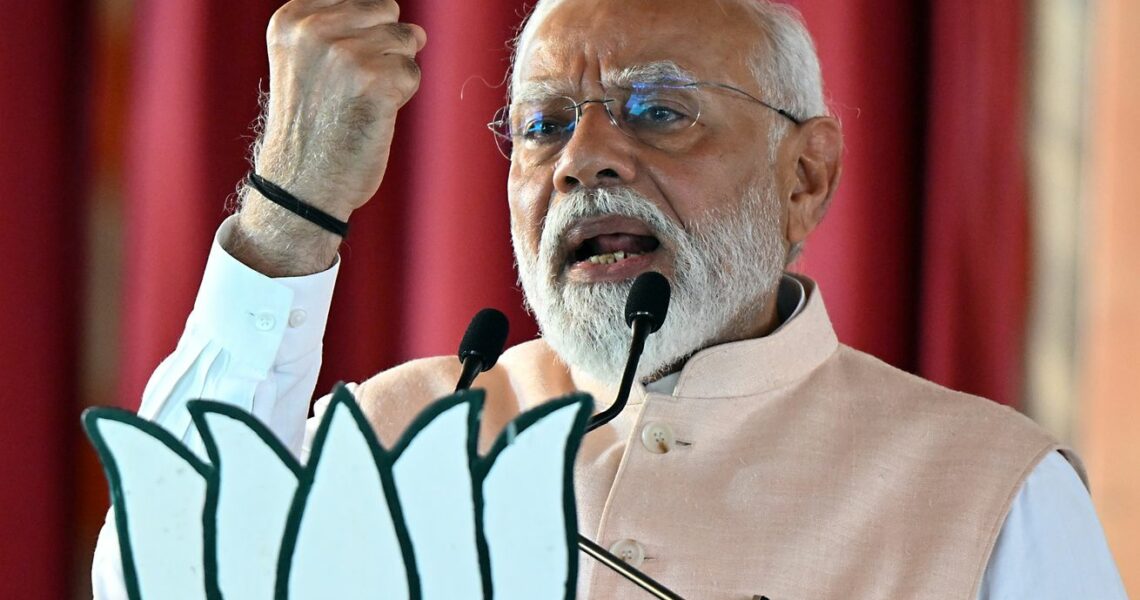
The 2024 Indian general election is already underway, and the popular and controversial Narendra Modi looks to be the favorite. How is India changing under Modi?
Today’s episode is all about India. You don’t have to believe that demography is pure destiny to appreciate the fact that the future of India is the future of the world. In 2024, today, India is the largest country by population on the planet, having surpassed China two years ago. In 2050, India is still projected to be the largest country in the world. In 2100, when I am 114 years old and this podcast is hosted by my cryo-frozen vat brain, India’s projected to be larger than the next two biggest countries combined: China and Nigeria.
This spring, nearly one billion Indians are eligible to vote in India’s election, and the big winner is almost certain—the highly popular and highly controversial Prime Minister Narendra Modi. What kind of a country is India becoming under Modi? Ravi Agrawal, the editor-in-chief of Foreign Policy magazine, joins us to discuss.
If you have questions, observations, or ideas for future episodes, email us at PlainEnglish@Spotify.com.
In the following excerpt, Derek and Ravi Agrawal explore how India has defined what it wants to be and the main differences between Jawaharlal Nehru and Narendra Modi.
Derek Thompson: The latest issue of foreign policy is devoted to the rise of India. At the biggest-picture level, what is it that you think Westerners, and maybe Americans in particular, don’t understand about India?
Ravi Agrawal: Well, I think one of the things in general is that in the West, we tend to think that every other country in the world wants to be more like us: more Western, more democratic, necessarily, more free. And that didn’t work out with China, and I don’t think it’s true of India either. I think India has its own sense of what it wants to be in the future. When it thinks about models of what it wants to be, there’s an element of envy in the way it looks at America and also Britain, but also China and also Singapore and also its own history. So it’s very complicated. Indians are going to chart their own path for what they want their country to be. It is democratic in that sense, and it’s what the people want.
Thompson: Your new essay on India and Prime Minister Narendra Modi, which anchors the new India issue of Foreign Policy magazine, is called “The New Idea of India.” And as long as we’re discussing the new idea of India, maybe we should start here. What is the old idea of modern India according to you?
Agrawal: So, as with any country, all countries have foundational myths. All countries have ways in which they have debated and contested ideas about who they really are, who they really want to be, what their vision is. And India is no different in that sense. It has always had a vibrant debate and discussion about what it really is. And in the 20th century, the early 1900s, when India was beginning to put forward a freedom-fighting movement to overthrow British colonial rule, there were many different ideas for what India could be. The idea that ended up winning out was an idea of a progressive, liberal, secular country. And the country’s founding fathers who put together this idea of what India could be, they had a profound understanding that India was a very divided country. India today, as well, is a collection of states where people speak different languages. There are different cultures and micro-histories, certainly different cuisines. You travel 100 miles, and there’s an entirely different dialect that people might be speaking.
And in many senses, in 1947, the year India became independent, the idea of uniting all of these groups together was an unlikely idea. And so what India’s founding fathers tried to do is that they united the country through an idea that, for this to work, it has to be secular; it has to be liberal; it has to be a vision that is evolving and inclusive and, in many senses, different from, say, Pakistan, which was founded as a homeland for Muslims. So in that Pakistan was exclusionary, India would be inclusionary. And that was the vision and the idea of India that prevailed for several decades of version 1.0 of India’s existence. I picked the phrase “idea of India,” by the way, from a book that was a very famous book that came out in 1997, the 50th year of India’s anniversary. And it was written by the historian Sunil Khilnani. And his point was exactly this, that India was an unlikely democracy. What knitted it together was secularism and democracy, basically.
Thompson: So India’s progressive, liberal, secular identity was embodied in many ways in its first prime minister, Jawaharlal Nehru. He was anglicized, you write. He was Cambridge educated. He went by Joe in his 20s. And that stands in sharp contrast to the current prime minister, Narendra Modi. Before we talk about Modi’s policies, let’s maybe spend a little bit of time on his biography. How do Modi’s upbringing and his early history compare or stand in contrast with Nehru’s?
Agrawal: Oh, they were so different, and without ascribing any value judgments, good or bad, to any of this, as you point out, Nehru was very anglicized, came from a rich family, upper middle class at the very least. Before Cambridge, he went to Harrow. So he was as anglicized as it gets. And in many ways, in the first few decades of India’s existence as a country, people like Nehru were seen as the ideal of what Indians could be: fluent English speakers, insider outsiders, but also speakers of an Indian language, deeply knowledgeable about the country with a vision for what the country could be. Modi is different primarily in that he doesn’t come from Nehru’s world; he doesn’t come from an elite background. His family was lower caste, lower middle class. His father was a tea seller. Modi was not a fluent English speaker, still isn’t really. He speaks English. But really what he is known for when it comes to his oration, which he’s very good at, is Hindi.
He’s a fantastic Hindi speaker. But when you look at Modi’s formative education, yes, he spent some time at a university, not a very well-known one. He joined the RSS, the Rashtriya Swayamsevak Sangh, which is best described as a Hindu social movement, also a paramilitary group, that has about 5 million members. And Modi essentially traveled around the country as a Hindu community organizer. He’d sleep in ordinary people’s homes, really got a sense of what the anxieties of the average Indian middle-class family were like, of what their hopes and dreams and aspirations were like. In many senses, if you speak to biographers of Modi, that was the thing he often grew on as the source of his thinking, as his formative education, as it were. So he could not be more different from Nehru. He comes from a totally different world.
This excerpt was edited for clarity. Listen to the rest of the episode here and follow the Plain English feed on Spotify.
Host: Derek Thompson
Guest: Ravi Agrawal
Producer: Devon Baroldi
Subscribe: Spotify

